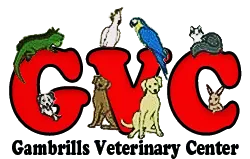Call us today to find out more about LAP SPAY
Prevent Fatal Bloat in Dogs
Emergency Service | Locally and Family Owned | AHAA Accredited
Treatment Option to Prevent Bloat
Laparoscopic Gastropexy is used to prevent Gastric Dilatation Volvulus, commonly known as Bloat. Bloat is a frequent cause of death in many dog breeds. During a gastropexy, the stomach is sutured to the abdominal wall.
Traditional Gastropexies require a lengthy surgical procedure with an extremely long surgical incision. Now this procedure can be done using laparoscopy, a minimally invasive form of surgery. A small incision is made into your dog's side and a tiny camera is placed to locate the stomach. Laparoscopic Gastropexy can be performed at the same time your pet is spayed or neutered and is successful in preventing more than 95% of GDV cases.
What Is Bloat?
Canine bloat refers to the distension of the stomach with gas. Bloat with Gastric Dilatation-Volvulus (GDV) occurs when the stomach fills with gas and twists. Massive gastric distension occurs rapidly and blocks the blood supply to the stomach. Shock, coma, and death occur within hours.
How Common Is GDV?
About 60,000 dogs in the United States develop bloat each year, and 40% of them die. Symptoms include dramatic swelling of the abdomen, attempts at vomiting, and difficulty breathing. While the exact cause of GDV is unknown, it is a serious problem in many large breed dogs and a leading cause of death, second only to cancer.
Some breeds are genetically at higher risk. Family history is important in evaluating the risk. If a parent, sibling, or offspring suffered GDV your pet has a 63% higher risk. Male dogs are also more prone than female dogs to develop GDV.
Why Laparoscopic Gastropexy?
- Prevents life-threatening twists of the stomach
- Less expensive than treating GDV
- Less pain and quicker recovery than traditional gastropexy techniques
- Shorter surgery and anesthesia time
- Can be done at time of spay or neuter
- Patient can go home the day of procedure
How Is GDV Treated?
Without prophylactic gastropexy if your pet develops bloat with GDV, emergency surgency to decompress and untwist the stomach is the only treatment. Treatment costs average between $4,000 to $6,000.
Is My Dog at Risk?
There are many large breed dogs that are at high risk of GDV. Some of the more common dog breeds affected include:
- Great Dane
- Saint Bernard
- Weimaraner
- Irish Wolfhound
- German Shepherd
- Standard Poodle
- Basset Hound
- Doberman Pincher
- Bloodhound
At Gambrills Veterinary Center, we have a fully equipped surgery and ICU. Trust us to care for your pet in the best possible manner.



Share On: